Charlotte Button, Chirpy Heat
There are less than 450 days to go until the majority of housing providers become fully regulated energy suppliers. How ready are you? As we saw in the recent consumer protection consultation, there are key areas of focus for the sector in the preparation to ensure they do not fall behind. Many are now putting their plans in place to be ready for regulation by Ofgem but where can you start?
Chirpy Heat announced the release of our Regulation and Compliance Insights Tool©, a self-scoring regulation and free survey, which produces your bespoke headline report of your current regulatory position, and outlines key actions to become regulation ready and compliant with current regulation. After 3 months of our survey being live and with thousands of homes now covered – we’ve had some interesting results which highlight key areas in the sector that need significant change in order to become regulation ready – take a look at the results below and see how you compare. You can get your own Regulations Insight Report done quickly and at no cost by clicking here.
Current regulation – Heat Network Metering and Billing Regulations (HNMBR):
OPSS heat network notification
Heat network owners and operators have a responsibility to notify the Office for Product Safety and Standards (OPSS) of all of their heat networks every four years, with new networks notified on, or the day before they enter into operation.
Responses from our survey showed that 71% of participants had completed this notification, and the remaining 29% didn’t know.
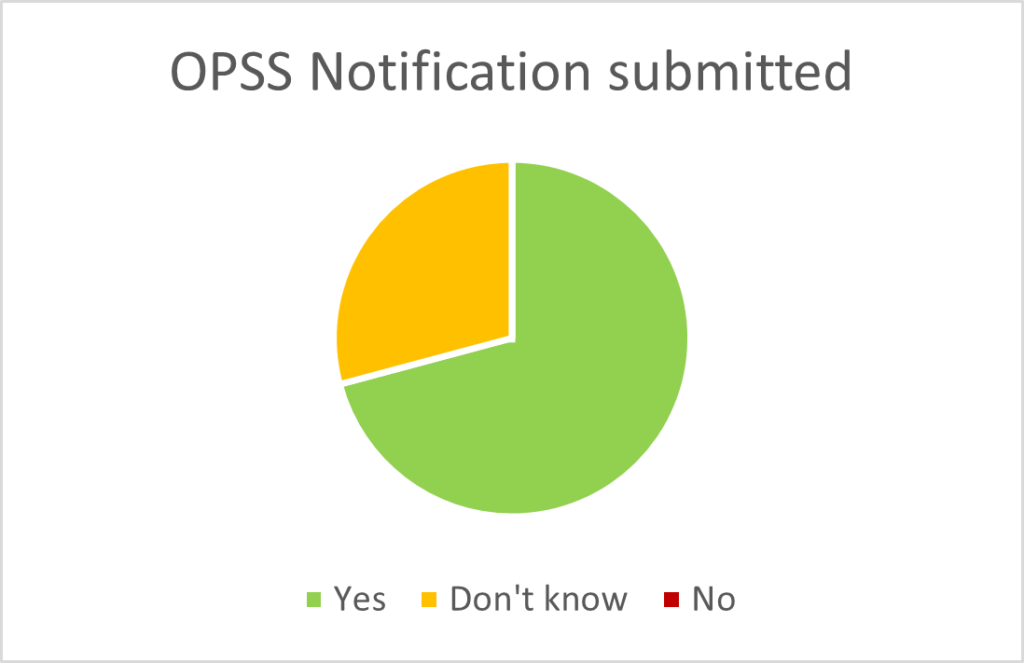
Cost-effectiveness assessment
Participants were asked if a cost-effectiveness assessment had been completed on any open class, unmetered heat network schemes.
Only 50% of participants confirmed this had been completed at their organisation. A cost-effectiveness assessment must be completed on all unmetered ‘open class’ to establish whether heat metering equipment is cost-effective for installation. This assessment must be re-completed every four years, or if there has been any significant change to the heat network.

Heat meter operation
Heat network operators have a duty to ensure heat metering equipment are accurately recording consumption in dwellings. Any issues must be flagged and rectified, to ensure customers are billed based on their consumption.
The results of our survey showed that only 21% of participants confirm this is currently taking place and can evidence this. The majority of responses, a total of 54%, confirmed this was not taking place at their organisation. The remaining 25% did not know.
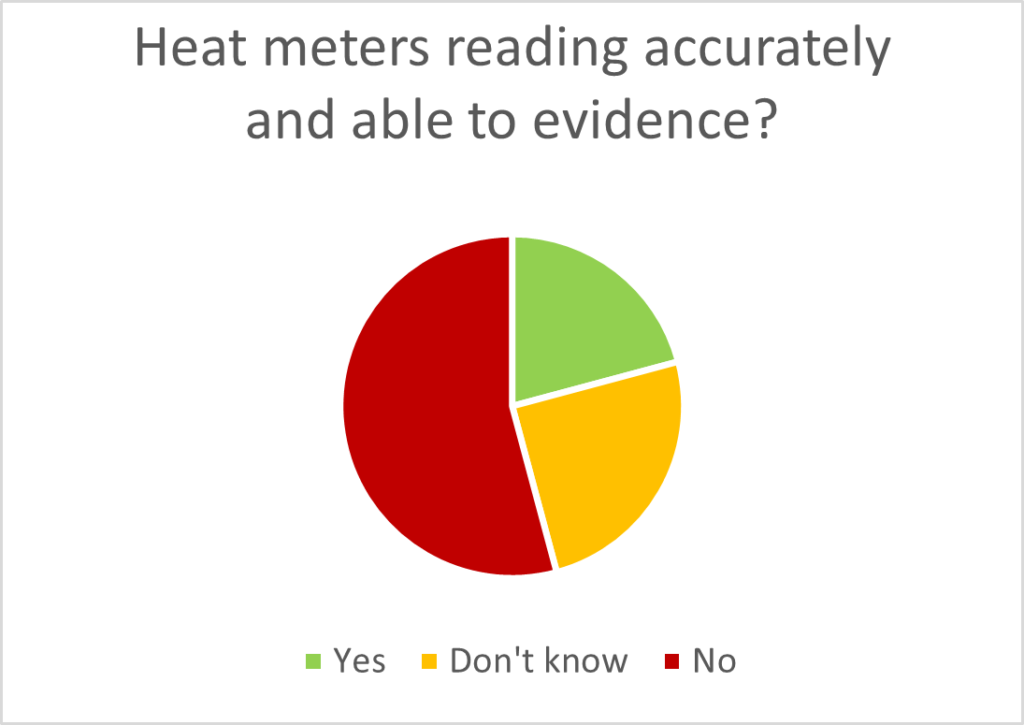
Building level meters
Where two or more buildings receive their heat and hot water from a single energy centre (district networks), each building is required to have a building level meter installed to measure the heat consumption for each building.
46% of participants confirmed this is in operation at their organisations.
21% confirmed this was not the case at their organisations, with the remaining 33% unsure.
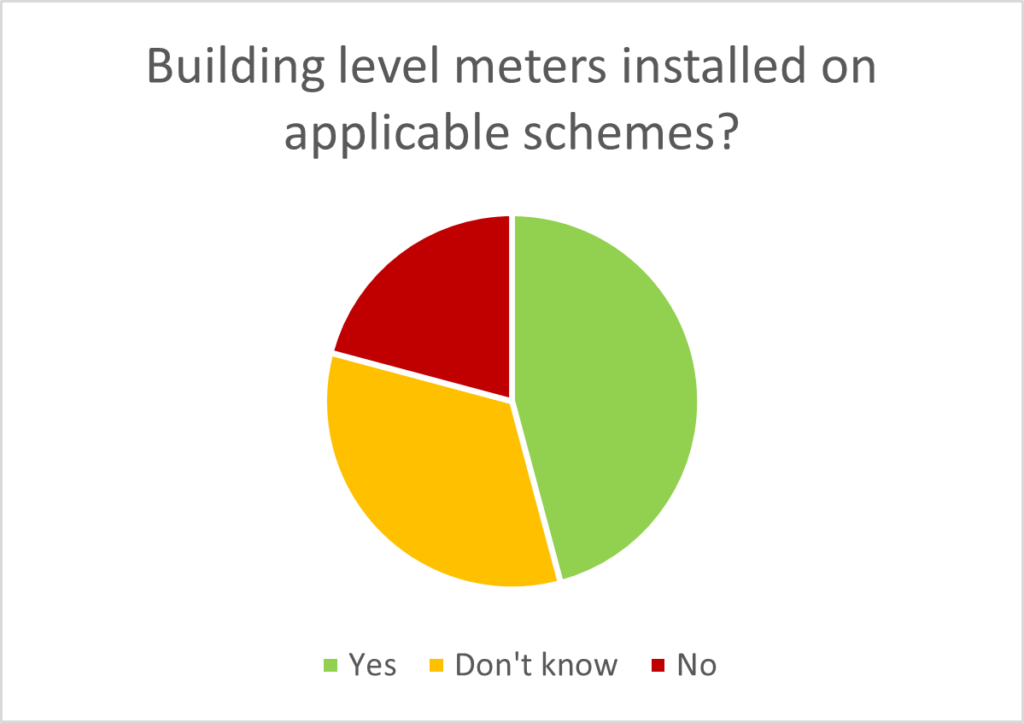
Upcoming regulation:
Data availability
With upcoming regulation, we can expect to see reporting requirements of key heat network data to OFGEM. Although exactly what these requirements and frequency of reporting looks like has yet to be finalised, the consumer protection consultation indicates the following aspects listed in the table below. Our survey results reflect whether participants of our survey have access to this data.
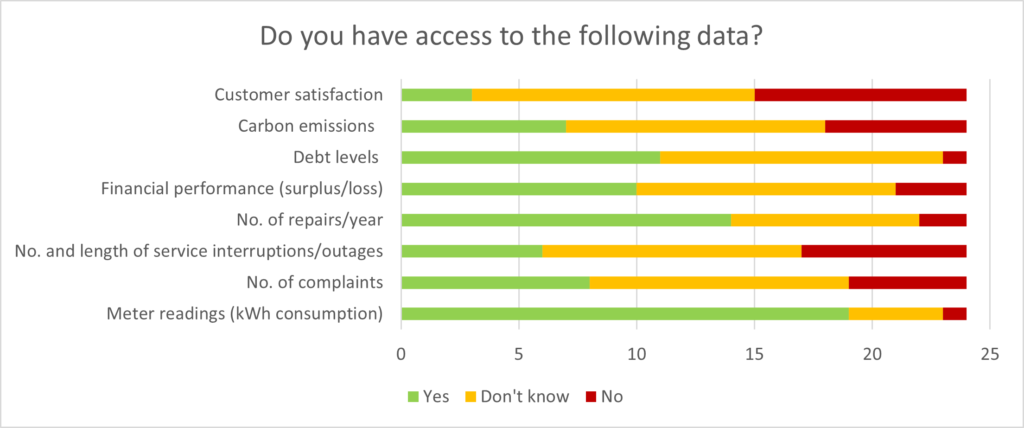
System performance review
Understanding the performance of a heat network will be expected with upcoming regulation to play a role in both data reporting and the Heat Network Technical Assurance Scheme (HNTAS) element to regulation.
Our survey identified that the majority of participants, 58% have never undertaken a performance review of their heat network schemes, with only 25% having done so previously.
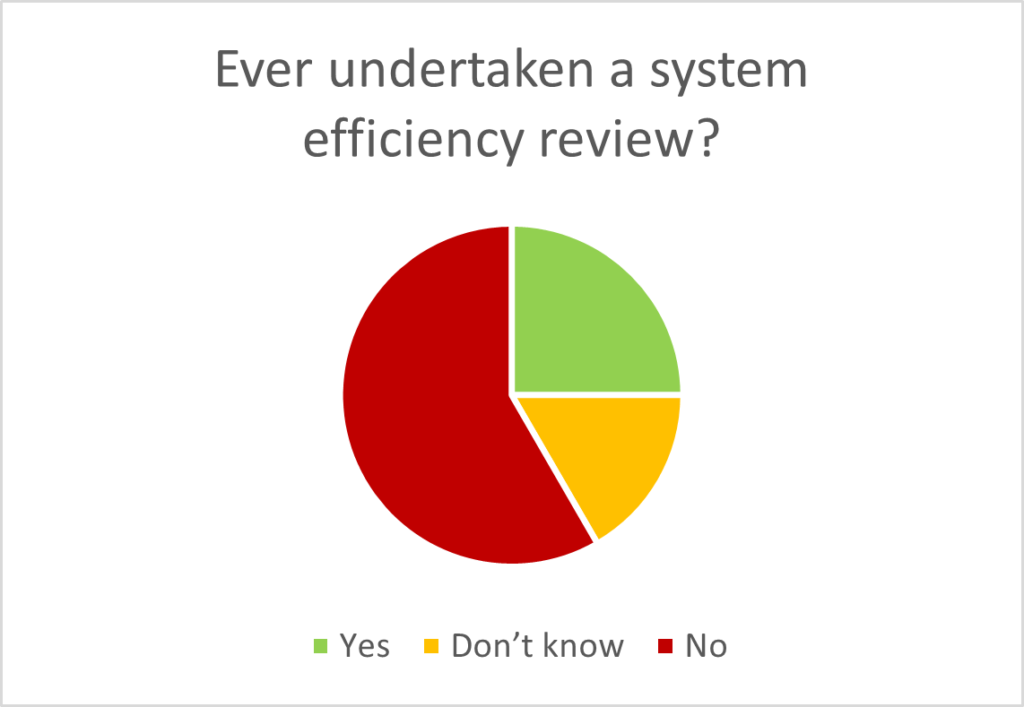
Heat network policies and processes
Key policies and processes specific to heat network customers will be included with upcoming regulation in support of the consumer protection element. Our survey asked participants whether they had the following policies and processes in place, specific to, or inclusive of heat network operation and heat customers.
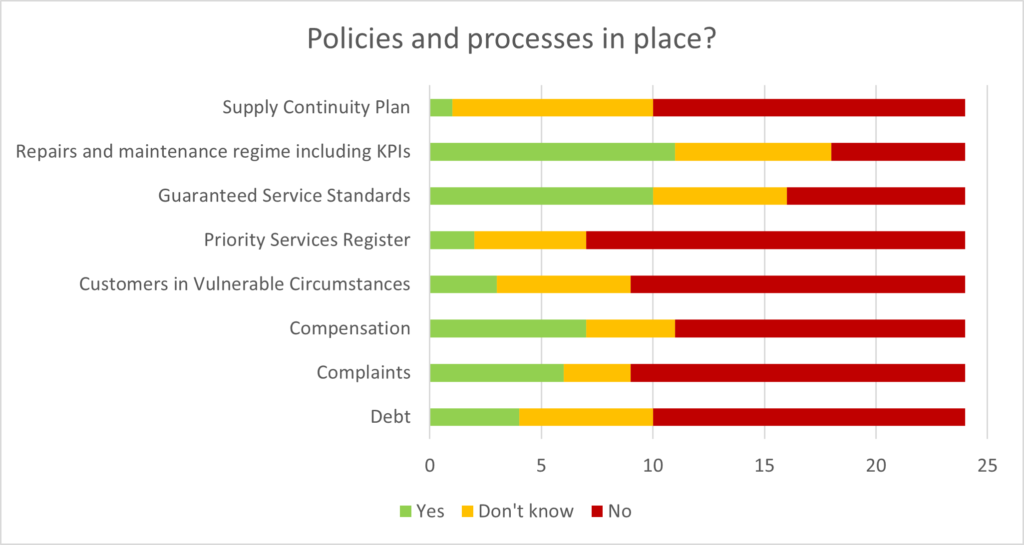
New development heat network standards
HNTAS will introduce regulatory requirements surrounding the technical performance of both new and existing heat network schemes. Although not a regulatory requirement, current best practice is for new development heat networks to be developed in-line with the Chartered Institution of Building Services Engineers (CIBSE) Code Of Practice 1 (CP1). The results of our survey identified that the majority of participants (67%) did not know whether this was currently the approach at their organisations. The development stage of a heat network is critical to the ongoing success of the network. Ensuring new networks are developed in line with CIBSE CP1 standards is regarded as best practice until full details surrounding HNTAS are known.
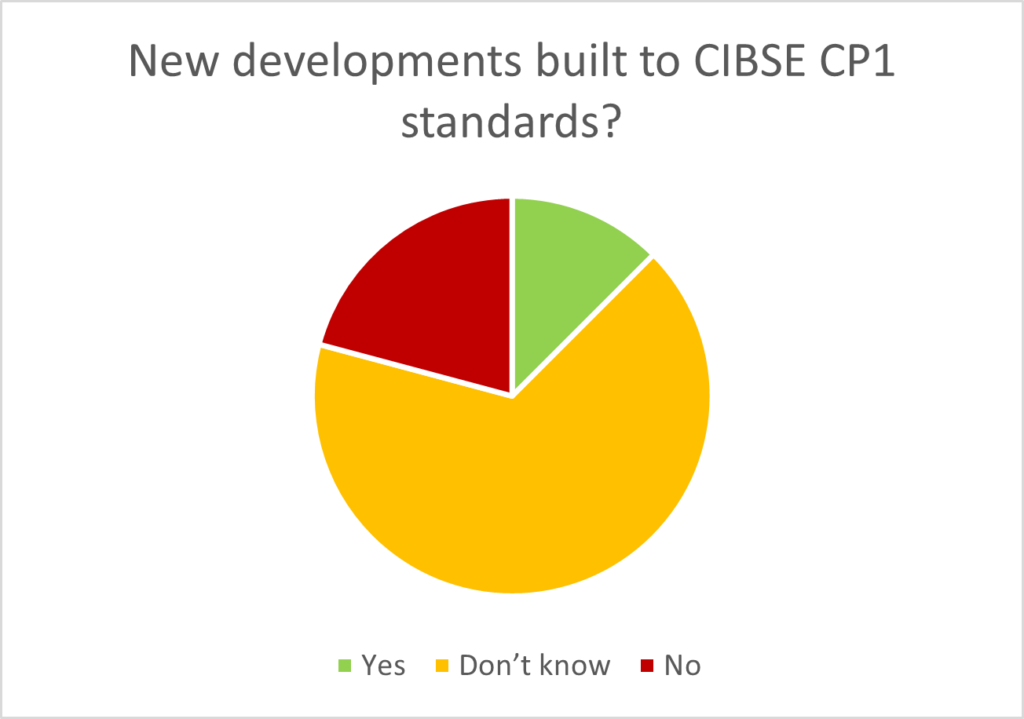
In summary, the average compliance score against current regulation was only 49% – a stark reminder that the sector is some way off compliance with existing regulation, let alone upcoming regulation with OFGEM as regulator to the sector. Where does your organisation stand in terms of compliance with the HNMBR?
Average compliance against future regulation currently stands at 29% from responses received at the time this blog was published. As you can see, the results we’ve shown above are only a snippet of the questions from our survey, and the various areas of what we can expect from upcoming regulation. It may be alarming to some to see how much work the sector needs to do to reach the regulation milestone in less than 450 days. The results show that although there are some areas of notable compliance for some, there remain large areas of uncertainty and areas for improvement in the sector.
Upcoming regulation will be a huge change to the sector, and with the risk of unlimited fines, implementing changes into current processes is critical. The key is putting in place your compliance plan in the coming months, and, as we can see from the results, there is a great deal of work to be done, with varying departments who require engagement and involvement.
The compliance clock is ticking!
What are your thoughts on the results? Are you surprised? What would these results look like at your own organisation?
If you want to talk this through, or want to know more about upcoming regulations, don’t hesitate to contact us.
Chirpy Heat – Simply Better Heat Networks
To complete your own, free survey, click here. Or email us at info@chirpyheat.com to begin your compliance journey!

